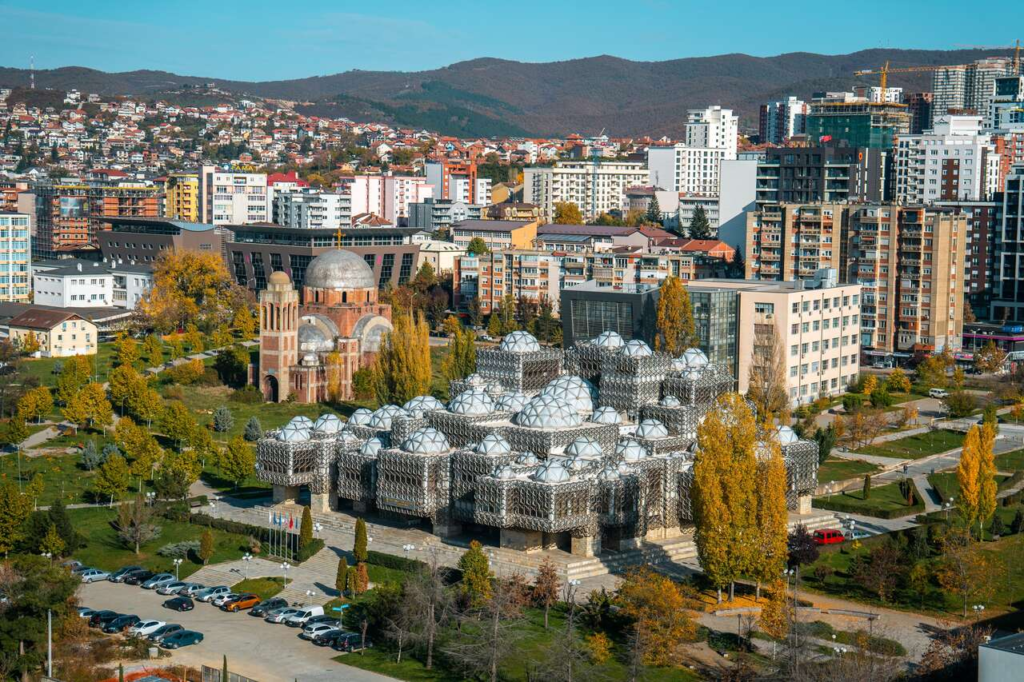Kosovo, a landlocked territory located in Southeast Europe, is known for its stunning landscapes, rich history, and vibrant culture. Despite its tumultuous past, country has emerged as a unique destination that offers visitors a glimpse into its diverse heritage and resilient spirit. With its mix of cultural influences, historical sites, and breathtaking natural beauty, country is becoming an increasingly popular destination for travelers seeking to explore the heart of the Balkans. This blog delves into Kosovo’s geography, history, culture, cuisine, and must-visit destinations, providing a comprehensive overview of this remarkable country.
Table of Contents
Geography
Kosovo covers an area of approximately 10,887 square kilometers and is situated in the central part of the Balkan Peninsula. It is bordered by Montenegro to the west, Albania to the south, and North Macedonia to the east. The northern border is adjacent to Serbia. Kosovo’s diverse landscape features mountains, valleys, and rivers, making it a haven for outdoor enthusiasts and nature lovers. The Sharr Mountains in the south are particularly noteworthy, offering stunning views and opportunities for hiking and skiing.
Kosovo’s capital, Pristina, is the largest city and serves as the political, economic, and cultural center of the country. Other significant towns include Gjakova, Ferizaj, and Mitrovica, each contributing to the rich tapestry of Kosovo’s heritage.
States of Kosovo
Kosovo is not divided into states but is composed of several municipalities. Recognized as independent by 104 out of 193 member states of the United Nations, Kosovo declared its independence from Serbia in 2008. However, it is still claimed by Serbia as the Autonomous Province of Kosovo and Metohija. Here is the table listing the districts of Kosovo and their capitals:
| No. | District | Capital |
|---|---|---|
| 1 | Ferizaj | Ferizaj |
| 2 | Gjakova | Gjakova |
| 3 | Gjilan | Gjilan |
| 4 | Mitrovica | Mitrovica |
| 5 | Peja | Peja |
| 6 | Pristina | Pristina |
| 7 | Prizren | Prizren |
History
Located in the heart of the Balkans, has a rich and complex history that dates back to ancient times. The region was inhabited by Illyrian tribes in antiquity and later became part of the Roman Empire. During the medieval period, Kosovo was a significant cultural and political center for the Serbian Kingdom.
The Battle of Kosovo in 1389, where Serbian forces faced the Ottoman Empire, is a pivotal event in the region’s history. Although the battle ended in an Ottoman victory, it became a symbol of Serbian national identity and resistance. In the subsequent centuries, Kosovo remained under Ottoman rule, which lasted for nearly 500 years. This period saw significant demographic and cultural changes, including the spread of Islam among the local population.
By the late 19th and early 20th centuries, Kosovo became a focal point of nationalist movements. Following the Balkan Wars (1912-1913), Kosovo was incorporated into the Kingdom of Serbia, and later into the Kingdom of Yugoslavia. Throughout the 20th century, the region experienced considerable ethnic tensions and political upheavals, particularly between the Albanian and Serbian communities.
The latter part of the 20th century was marked by heightened conflict and the struggle for independence. In the 1990s, as Yugoslavia disintegrated, Kosovo’s demand for greater autonomy grew. The situation escalated into a full-scale conflict in 1998-1999, leading to NATO intervention and a subsequent UN administration of the territory.
In 2008, Kosovo unilaterally declared independence from Serbia. While its independence is recognized by over 100 countries, Serbia and several other nations do not recognize it, making Kosovo’s political status a subject of ongoing international debate and negotiation.
Top Ten Most Famous Places to Visit
1. Pristina

Pristina, the capital and largest city of Kosovo, is a vibrant hub of culture and politics. Visitors can explore the iconic Newborn Monument, symbolizing Kosovo’s independence, and the historic Imperial Mosque. The bustling streets are lined with cafes, shops, and cultural institutions, making Pristina a lively destination for both locals and tourists. The Kosovo Museum offers insights into the region’s history and heritage, while the vibrant nightlife scene attracts young people from across the country.
2. Gjakova

Gjakova is a charming town known for its rich cultural heritage and historical significance. The town is famous for the Çarshia e Madhe, a beautifully restored Ottoman-era bazaar that showcases traditional crafts and local products. Visitors can explore the town’s historic mosques, including the Hadum Mosque, and enjoy a stroll along the Lumbardhi River. Gjakova’s friendly atmosphere and rich history make it a delightful stop for travelers.
3. Peja (Pec)

Peja is a picturesque town located at the foot of the Rugova Mountains. It is known for its stunning natural beauty and outdoor recreational opportunities. The Patriarchate of Peć, a UNESCO World Heritage site, is a significant cultural and religious landmark, housing beautiful frescoes and centuries-old architecture. Visitors can also explore the nearby Rugova Canyon, offering breathtaking views and hiking trails that attract adventure seekers.
4. Mitrovica

Mitrovica is a city divided by the Ibar River, symbolizing the ethnic divisions in Kosovo. The northern part is predominantly inhabited by Serbs, while the southern part is mostly Albanian. Visitors can explore the city’s cultural diversity, visit the historic Mitrovica Bridge, and enjoy the vibrant local markets. The city’s unique atmosphere and rich history provide insight into Kosovo’s complex social fabric.
5. Kosovo Polje

Kosovo Polje, or the Field of Blackbirds, is an area of historical significance, particularly for Serbs. The site is known for the Battle of Kosovo in 1389, which played a crucial role in Serbian history. Visitors can explore the nearby Gazimestan Monument, commemorating the battle, and learn about the historical events that shaped the region. The area offers beautiful landscapes and a peaceful environment for reflection.
6. The Bear Sanctuary in Mramor

The Bear Sanctuary in Mramor is a unique attraction dedicated to the rescue and rehabilitation of bears that have been mistreated or kept in captivity. Visitors can observe the bears in a natural environment while learning about animal welfare and conservation efforts in Kosovo. The sanctuary provides a meaningful experience for those interested in wildlife protection and environmental issues.
7. Gadime Cave

Gadime Cave, located near the town of Gadime, is a natural wonder that attracts visitors with its stunning stalactites and stalagmites. The cave offers guided tours that take visitors through its fascinating formations, showcasing the beauty of nature. It’s an excellent destination for nature lovers and adventure seekers looking to explore Kosovo’s underground wonders.
8. The Fortress of Novo Brdo

The Fortress of Novo Brdo is a historical site that dates back to the 14th century and offers stunning views of the surrounding landscape. The fortress played a significant role in the region’s history and is an important archaeological site. Visitors can explore the ruins and learn about the strategic importance of this location during medieval times.
9. Decani Monastery

The Decani Monastery is another UNESCO World Heritage site located near the town of Deçan. Built in the 14th century, it is known for its stunning Byzantine architecture and beautiful frescoes. The monastery is an important religious site for Serbian Orthodox Christians and attracts visitors interested in history, art, and spirituality. The peaceful surroundings and impressive architecture make it a must-visit destination.
10. Rugova Canyon

Rugova Canyon, located near Peja, is a natural marvel known for its dramatic cliffs and breathtaking scenery. The canyon offers numerous hiking and trekking opportunities, making it a popular destination for outdoor enthusiasts. Visitors can explore the stunning landscapes, enjoy picnics by the river, or participate in adventure sports such as rock climbing and zip-lining.
Culture
Kosovo’s culture is a blend of various influences, reflecting its diverse history and population. Traditional music, dance, and crafts play a significant role in the cultural identity of Kosovo. The country is known for its vibrant folk traditions, with music and dance being integral to celebrations and festivals.
The arts are highly valued in Kosovo, with a growing community of artists, musicians, and writers contributing to the cultural landscape. The culinary scene is also rich, with traditional dishes reflecting the country’s diverse heritage.
Festivals
Kosovo hosts various festivals throughout the year, celebrating its rich cultural heritage. The Kosovo Film Festival is an annual event showcasing local and international films, promoting cinema as a form of artistic expression. The DokuFest, held in Prizren, is a prominent documentary and short film festival that attracts filmmakers and audiences from around the world.
Other notable festivals include the Kosovo National Folklore Festival, which celebrates traditional music and dance, and the International Jazz Festival, showcasing local and international jazz musicians. These festivals provide an opportunity for visitors to experience Kosovo’s vibrant cultural scene.
Cuisine
Cuisine is a reflection of its diverse cultural influences, combining Mediterranean and Balkan flavors in this country. Traditional dishes often feature fresh ingredients, herbs, and spices, showcasing the region’s culinary heritage. Meals are typically hearty and flavorful, with an emphasis on communal dining and sharing.
Top Eight Most Famous Foods








Economy
Kosovo’s economy is still developing, with a focus on key sectors such as agriculture, manufacturing, and services. Agriculture plays a vital role, with many families relying on farming for their livelihoods. The country is known for its production of fruits, vegetables, and livestock.
The service sector is growing, particularly in tourism and hospitality, as Kosovo attracts more visitors each year. Remittances from the diaspora also contribute significantly to the economy, helping to support local communities and businesses. The government is working to improve the business environment and attract foreign investment to promote sustainable economic growth.
Future prospective
Kosovo’s future is filled with potential as it continues to develop and embrace its unique cultural identity. The government aims to strengthen its institutions, improve the economy, and enhance the quality of life for its citizens. Efforts to promote tourism, protect cultural heritage, and support local businesses are integral to building a sustainable future.
As Kosovo strives for greater international recognition and integration into global markets, its rich traditions, vibrant culture, and natural beauty will play a crucial role in shaping its identity. The resilience and determination of the people of Kosovo will continue to drive the nation toward a brighter future.
Conclusion
Kosovo is a remarkable destination that offers a unique blend of history, culture, and natural beauty. From the bustling streets of Pristina to the stunning landscapes of Rugova Canyon, Kosovo invites visitors to explore its rich heritage and vibrant spirit. The country’s resilient journey toward independence and development is reflected in its warm hospitality and rich traditions. Whether you’re wandering through historic towns, savoring delicious local cuisine, or experiencing the lively festivals, country promises unforgettable memories and experiences that showcase the heart of the Balkans.
let’s enjoy few years on earth with peace and happiness….✍🏼🙏

